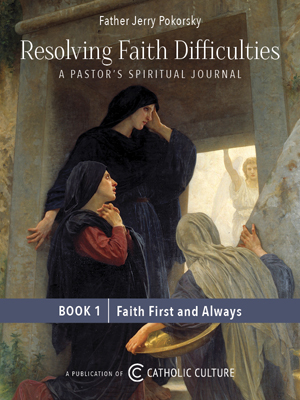Popular Movement Is One of the Most Pressing Challenges to Christian Faith
We're all in this universe together, from planets to porpoises, flowers to fungi, babies to barnacles, all sharing the same, immense vibration of energy. People are like holograms, reflecting the image of all creation, where everyone and everything vibrates on its own frequency and yet is intimately united by a mysterious energy force called life. We're a collection of inter-connected neurons in the earth's central nervous system.
That concept of life might sound like a magical mystery tour, but in fact it is the concept of "reality" many espouse for a new age, which has supposedly begun to dawn in the universe. Some describe that age as the Age of Aquarius, the time for a major paradigm shift in our world-view, replacing the world-view of the present Christian era, which they call the Age of Pisces and which they believe is slowly dying away.
Sound fanciful?
It is, according to "Jesus Christ, the Bearer of the Water of Life: A Christian Reflection on the New Age," which is a document issued in 2003 by the Pontifical Council for Culture and the Pontifical Council for Interreligious Dialogue.
"For many people, the term 'New Age' clearly refers to a momentous turning-point in history," the Vatican councils state in the publication. "People who stress the imminent change in the world are often expressing a wish for such a change, not so much in the world itself as in our culture."
The Age of Aquarius is a vision, they say, not a theory — and there are several basic principles behind the new vision of the individual, society and the world.
Among those principles is a desire to shift from traditional forms of religion to more personal expressions of what is now being called "spirituality" — to move from a male-dominated culture to one that celebrates the feminine, and to rely less on reason and more on feelings and emotions.
Those shifts are found in everything from the Human Potential Movement and the worship of goddesses such as Gaia and Sophia and with pre-Christian forms of religion such as shamanism and ancient Egyptian practices.
"The New Age movement is both the symptom of a culture in deep crisis and the wrong answer to this situation of cultural crisis, its worries, questions, aspirations and hopes," Cardinal Paul Poupard, president of the Pontifical Council for Culture, wrote in the March 5, 2003, edition of L'Osservatore Romano.
"The phenomenon of the New Age Movement, together with other new religious movements, is one of the most pressing challenges to the Christian faith," Cardinal Poupard wrote in the article. "The New Age Movement sets forth theories and doctrines about God, man and the world, which are incompatible with the Christian faith."
What is most attractive about these New Age alternatives is that they "do not demand any more faith or belief than going to the cinema and yet claim to satisfy people's spiritual appetites," the pontifical document states.
This leads one to ask, what exactly are those spiritual appetites, according to the New Age?
The answer to that question, the Vatican councils say in "Jesus Christ: The Bearer of Water and Life," is the key that distinguishes some of the differences between the Christian tradition and much of what can be called New Age.
"Some versions of New Age harness the powers of nature and seek to communicate with another world to discover the fate of individuals, to help individuals tune in to the right frequency to make the most of themselves and their circumstances. In most cases, it is completely fatalistic," the document warns of "New Age" philosophy. "Christianity, on the other hand, is an invitation to look outward and beyond, to the 'new Advent' of the God who calls us to live the dialogue of love."
Many of those New Age fascinations are being fueled by modern technology, such as the Internet, which can be a "volatile vehicle of misinformation on so many aspects of religion," the Vatican authors warns.
"Not all that is labeled 'Christian' or 'Catholic' can be trusted to reflect the teachings of the Catholic Church and, at the same time, there is a remarkable expansion of New Age sources ranging from the serious to the ridiculous," they say in the 2003 document. "People need, and have a right to, reliable information on the differences between Christianity and New Age."
The document cites specifically many popular practices, including the enneagram, healing touch massage, Celtic Christianity and Wicca. What are these practices? Where do they come from and how compatible are they with Christianity?
"It would be unwise to say everything connected with the New Age movement is good, or that everything about it is bad," the document states.
That is why their aim is not to condemn, the writers say, but to help Catholics understand the basic principles behind New Age thinking "so that they can then make a Christian evaluation of the elements of New Age they encounter."
At the same time, Cardinal Poupard writes that unknowingly using New Age products or therapies does not necessarily mean embracing the entire ideology of the New Age movement.
"A certain discernment is necessary both for what pertains to products labeled New Age and for what pertains to those who, to a greater or lesser degree can be considered 'clients' of the New Age movement," the cardinal wrote.
"Clients, devotees and disciples are not the same thing," he says. "Honesty and integrity require that we be very prudent and not turn every blade of grass into a bundle, by using labels with the greatest of ease."
Beginning this issue, The Colorado Catholic Herald will launch a multi-part series on a variety of New Age practices. Each part will provide historical information on the origins of a particular practice, first-hand accounts from practitioners and what our church teaches about it.
We will explore common questions among the laity, including: What is the difference between the various forms of "healing touch" and the Christian practice of laying on of hands? When are meditation techniques useful for Christian prayer, and when do they stray into forms of meditation that are not consistent with Catholic teaching? How sound a science is astrology, and why does one expert say our "sun signs" need to be moved back one complete sign? Is there such a thing as magic, and where do those powers come from?
(This article originally appeared in The Catholic Standard and Times, the Philadalphia archdiocesan newspaper.)
Other articles in this series:
PART I: Popular Movement Is One of the Most Pressing Challenges to Christian Faith
PART II: Divination: Consulting Psychics and Mediums
PART III: Reiki and Healing Touch
PART IV: The Enneagram: What's Your Number?
PART V: Is Acupuncture Acceptable for Catholics?
PART VI: Bewitched by Wicca
PART VII: Ouija Boards and Tarot Cards
PART VIII: Energy Medicine: Part One — The Science
PART IX: Energy Medicine: Part Two — The Theology
PART X: The Exercise of Religion: Yoga
Ten questions to help you determine 'Christian or New Age?'
© The Catholic Diocese of Colorado Springs
This item 8754 digitally provided courtesy of CatholicCulture.org






